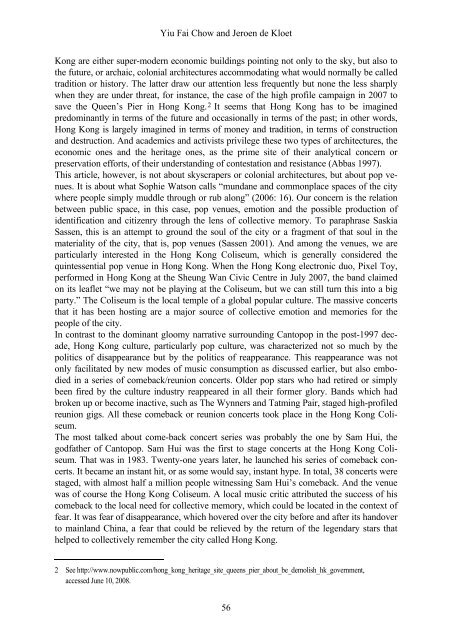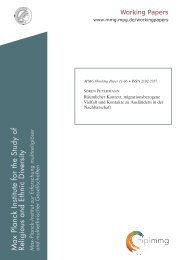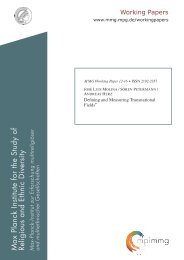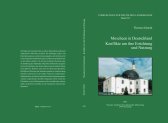Building Memories – A Study of Pop Venues in Hong Kong
Building Memories – A Study of Pop Venues in Hong Kong
Building Memories – A Study of Pop Venues in Hong Kong
Create successful ePaper yourself
Turn your PDF publications into a flip-book with our unique Google optimized e-Paper software.
Yiu Fai Chow and Jeroen de Kloet<br />
<strong>Kong</strong> are either super-modern economic build<strong>in</strong>gs po<strong>in</strong>t<strong>in</strong>g not only to the sky, but also to<br />
the future, or archaic, colonial architectures accommodat<strong>in</strong>g what would normally be called<br />
tradition or history. The latter draw our attention less frequently but none the less sharply<br />
when they are under threat, for <strong>in</strong>stance, the case <strong>of</strong> the high pr<strong>of</strong>ile campaign <strong>in</strong> 2007 to<br />
save the Queen’s Pier <strong>in</strong> <strong>Hong</strong> <strong>Kong</strong>. 2 It seems that <strong>Hong</strong> <strong>Kong</strong> has to be imag<strong>in</strong>ed<br />
predom<strong>in</strong>antly <strong>in</strong> terms <strong>of</strong> the future and occasionally <strong>in</strong> terms <strong>of</strong> the past; <strong>in</strong> other words,<br />
<strong>Hong</strong> <strong>Kong</strong> is largely imag<strong>in</strong>ed <strong>in</strong> terms <strong>of</strong> money and tradition, <strong>in</strong> terms <strong>of</strong> construction<br />
and destruction. And academics and activists privilege these two types <strong>of</strong> architectures, the<br />
economic ones and the heritage ones, as the prime site <strong>of</strong> their analytical concern or<br />
preservation efforts, <strong>of</strong> their understand<strong>in</strong>g <strong>of</strong> contestation and resistance (Abbas 1997).<br />
This article, however, is not about skyscrapers or colonial architectures, but about pop venues.<br />
It is about what Sophie Watson calls “mundane and commonplace spaces <strong>of</strong> the city<br />
where people simply muddle through or rub along” (2006: 16). Our concern is the relation<br />
between public space, <strong>in</strong> this case, pop venues, emotion and the possible production <strong>of</strong><br />
identification and citizenry through the lens <strong>of</strong> collective memory. To paraphrase Saskia<br />
Sassen, this is an attempt to ground the soul <strong>of</strong> the city or a fragment <strong>of</strong> that soul <strong>in</strong> the<br />
materiality <strong>of</strong> the city, that is, pop venues (Sassen 2001). And among the venues, we are<br />
particularly <strong>in</strong>terested <strong>in</strong> the <strong>Hong</strong> <strong>Kong</strong> Coliseum, which is generally considered the<br />
qu<strong>in</strong>tessential pop venue <strong>in</strong> <strong>Hong</strong> <strong>Kong</strong>. When the <strong>Hong</strong> <strong>Kong</strong> electronic duo, Pixel Toy,<br />
performed <strong>in</strong> <strong>Hong</strong> <strong>Kong</strong> at the Sheung Wan Civic Centre <strong>in</strong> July 2007, the band claimed<br />
on its leaflet “we may not be play<strong>in</strong>g at the Coliseum, but we can still turn this <strong>in</strong>to a big<br />
party.” The Coliseum is the local temple <strong>of</strong> a global popular culture. The massive concerts<br />
that it has been host<strong>in</strong>g are a major source <strong>of</strong> collective emotion and memories for the<br />
people <strong>of</strong> the city.<br />
In contrast to the dom<strong>in</strong>ant gloomy narrative surround<strong>in</strong>g Cantopop <strong>in</strong> the post-1997 decade,<br />
<strong>Hong</strong> <strong>Kong</strong> culture, particularly pop culture, was characterized not so much by the<br />
politics <strong>of</strong> disappearance but by the politics <strong>of</strong> reappearance. This reappearance was not<br />
only facilitated by new modes <strong>of</strong> music consumption as discussed earlier, but also embodied<br />
<strong>in</strong> a series <strong>of</strong> comeback/reunion concerts. Older pop stars who had retired or simply<br />
been fired by the culture <strong>in</strong>dustry reappeared <strong>in</strong> all their former glory. Bands which had<br />
broken up or become <strong>in</strong>active, such as The Wynners and Tatm<strong>in</strong>g Pair, staged high-pr<strong>of</strong>iled<br />
reunion gigs. All these comeback or reunion concerts took place <strong>in</strong> the <strong>Hong</strong> <strong>Kong</strong> Coliseum.<br />
The most talked about come-back concert series was probably the one by Sam Hui, the<br />
godfather <strong>of</strong> Cantopop. Sam Hui was the first to stage concerts at the <strong>Hong</strong> <strong>Kong</strong> Coliseum.<br />
That was <strong>in</strong> 1983. Twenty-one years later, he launched his series <strong>of</strong> comeback concerts.<br />
It became an <strong>in</strong>stant hit, or as some would say, <strong>in</strong>stant hype. In total, 38 concerts were<br />
staged, with almost half a million people witness<strong>in</strong>g Sam Hui’s comeback. And the venue<br />
was <strong>of</strong> course the <strong>Hong</strong> <strong>Kong</strong> Coliseum. A local music critic attributed the success <strong>of</strong> his<br />
comeback to the local need for collective memory, which could be located <strong>in</strong> the context <strong>of</strong><br />
fear. It was fear <strong>of</strong> disappearance, which hovered over the city before and after its handover<br />
to ma<strong>in</strong>land Ch<strong>in</strong>a, a fear that could be relieved by the return <strong>of</strong> the legendary stars that<br />
helped to collectively remember the city called <strong>Hong</strong> <strong>Kong</strong>.<br />
2 See http://www.nowpublic.com/hong_kong_heritage_site_queens_pier_about_be_demolish_hk_government,<br />
accessed June 10, 2008.<br />
56






